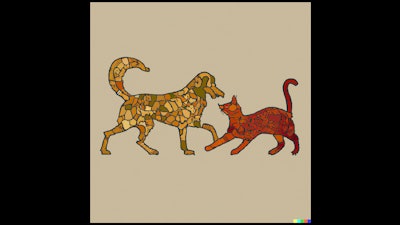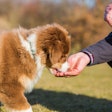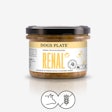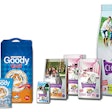
Pet food sales in Türkiye reached US$127 million in 2022 and are may double to US$300 million by the end of 2027, according to a report from the United States Department of Agriculture’s (USDA) Foreign Agricultural Service citing data from the Turkish Statistical Institute. Approximately two-thirds of pet food consumed in Türkiye is produced domestically, while most of the remainder is imported from Europe. However, USDA analysts believe there may be opportunities for U.S. rendering companies to export pet food ingredients to Türkiye. Currently, Turkish companies import approximately 15% of pet food ingredients, including animal by-products, poultry fats and meals, fish oil, milk-based products, and blood meal.
Domestic pet food production doubled from less than 90,000 metric tons in 2019 to nearly 200,000 metric tons by the start of 2021. In 2022, Turkish pet food production grew to 225,000 metric tons. Turkish pet food production has grown dramatically, yet is still dependent on imported raw materials in many cases. Chicken products are the most frequent protein sources. Mechanically deboned chicken MDM from domestic sources is used in manufacturing wet pet food products. However, ruminant-based MDM is unavailable for pet food production, since it is primarily used for human consumption. However, the Turkish Ministry of Agriculture and Forestry (MinAF) prohibits MDM imports. Grain and its by-products, such as rice flour, corn flour, wheat flour, rice bran and wheat bran, also frequently appear on pet food ingredient decks in Türkiye.
Pet food price inflation in Türkiye
Despite the last few years of growth, high prices and difficult economic conditions inside the country may have weakened demand for both imported and domestically produced pet food in Türkiye. Domestic inflationary pressures, raw materials shortages, high input prices (e.g., electricity, transport, labor, etc.), regulations governing pet food production and taxes have contributed to the increase in pet food prices.
“As an example, since 2021, the price of a 15-kilogram bag of imported premium pet food (approximately $69) and locally made pet food (approximately $30) has shot up 90 percent and 60 percent, respectively,” wrote USDA analysts. “This surge in prices has made it difficult for many households to meet the nutritional needs of their pets.”
The need to import ingredients has also caused prices to rise for Turkish pet owners. As the Turkish Lira has depreciated against the U.S. dollar, pet food ingredients have become relatively more expensive for Turkish companies, and those expenses have been passed on to consumers. The Turkish government classifies dog and cat food as a luxury item. The Turkish government’s 18% value added tax (VAT) on dog and cat food has also driven pet food prices up. However, the VAT on most animal feed and other pet food (e.g., bird and fish) is zero or 1%.
Pet food is highly regulated in Türkiye as the country brings its laws into acquiescence with E.U. standards.
“The product is meticulously examined by MinAF from production or importation to the point of sale,” USDA analysts wrote. “Importers complain that the sampling and testing fees are too expensive, and inspection procedures are not applied uniformly from port to port. According to market sources, the single biggest regulatory hurdle that is limiting the industry’s growth potential is the restriction on the use of plant materials derived from biotechnology. This restriction applies to both finished pet food and ingredients, both imported and domestic.”
Pet food exports from and imports to Türkiye
Although domestic production has increased demand has outpaced supply, so Türkiye has also imported more pet food over the years. Dog and cat food imports have doubled by both value and volume from 2018 to 2022.
“In 2022 alone, pet food imports grew year-over-year by more than 30 percent to 77,000 metric tons ($136 million),” USDA market researchers wrote. “The top three suppliers were France, Hungary and Serbia. Royal Canin and Nestle-Purina are the major brands exporting from France and Serbia, respectively. These premium brands target middle to upper-income households who appreciate and are willing to pay more for high-quality pet food. In contrast, pet food from Hungary is typically considered medium-quality and is priced for middle to lower-income households and animal shelters.”
The United States exports smaller quantities of pet food to Türkiye than E.U. producers. In 2022, U.S. pet food makers exported 88 metric tons of products to Türkiye, valued at approximately US$490,000.
Turkish pet food exports have grown along with imports. Turkish brands export approximately one-quarter of the pet food they produce.
“In 2022, exports hit a record of 62,000 metric tons (US$89 million), up 57% from the previous year,” USDA analysts reported. “The top export destinations were Malaysia, Israel, Iraq, and the United States. By comparison and as evidence of the ongoing growth in the sector, Türkiye’s pet food exports were less than 3,000 metric tons in 2016.”
The largest domestic pet food producer is Lider Pet Food which accounts for about 80-90% of pet food production in Türkiye.
Imported Brands
- Proplan
- Royal Canin
- N&D, Hill’s Pet Nutrition
- Acana
- Whiskas
- Brit
- Meradog
- Bosch
- Advance
Domestic Brands
- Lider Pet Food with sub-brands; Spectrum, Reflex, Bonnie, Proline, King, Trendline, Enjoy, Jetix, New Dog, New Cat, Thunder
- Tropikal Pet with sub-brands; Champion, Goody
- Effeffe Pet Food with sub-brands; Lavital, Vet One, ProNature, Paw in Love, EcoNature, Dost Pati, Croque, Pet Lover
- Hermos Pet with sub-brands; Clicker, Benefit, Mystic, MyFood, PawPaw
Pet population in Türkiye
The Turkish Veterinary Association (TVHB) reported that approximately 4.5 million pet dogs and 1.5 million cats live in the Anatolian country, according to the USDA. TVHB estimates that stray dogs and cats are more numerous at nearly 10 million overall. Approximately 5% of Turkish households currently own a dog and 14% own a cat. Another organization reported almost opposite pet ownership figures. The European Pet Food Industry Federation (FEDIAF) “Facts and Figures 2022” report stated that Turkey was home to 4,660,000 pet cats and 1,386,00 pet dogs.
The use of table scraps in Türkiye remains high compared to the U.S. and E.U. The USDA cited market sources stating that owners of approximately 35% of pet cats and 20% of pet dogs in Türkiye feed their animals with commercial pet food. However, Turkish pet owners seem to be moving towards greater use of commercial diets.

















